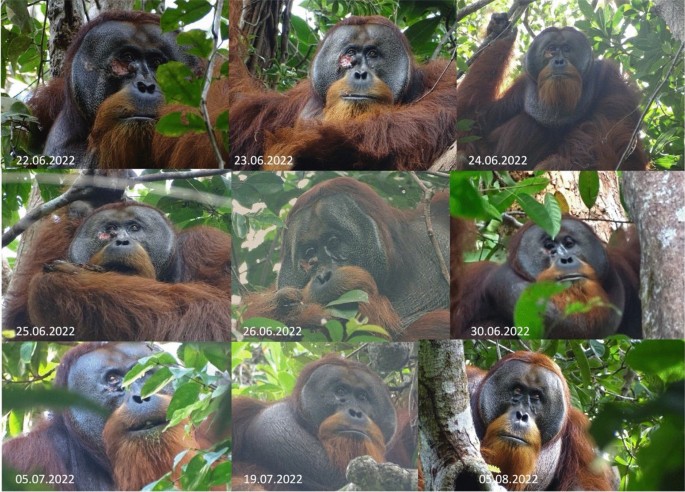2024-05-02 マックス・プランク研究所
<関連情報>
- https://www.mpg.de/21886982/0429-ornr-first-evidence-for-medical-wound-treatment-in-a-wild-animal-987453-x
- https://www.nature.com/articles/s41598-024-58988-7
オスのスマトラオランウータンが、生物学的に活性のある植物で顔の傷を積極的に自己治療している Active self-treatment of a facial wound with a biologically active plant by a male Sumatran orangutan
Isabelle B. Laumer,Arif Rahman,Tri Rahmaeti,Ulil Azhari,Hermansyah,Sri Suci Utami Atmoko &Caroline Schuppli
Scientific Reports Published:02 May 2024
DOI:https://doi.org/10.1038/s41598-024-58988-7

Abstract
Although self-medication in non-human animals is often difficult to document systematically due to the difficulty of predicting its occurrence, there is widespread evidence of such behaviors as whole leaf swallowing, bitter pith chewing, and fur rubbing in African great apes, orangutans, white handed gibbons, and several other species of monkeys in Africa, Central and South America and Madagascar. To the best of our knowledge, there is only one report of active wound treatment in non-human animals, namely in chimpanzees. We observed a male Sumatran orangutan (Pongo abelii) who sustained a facial wound. Three days after the injury he selectively ripped off leaves of a liana with the common name Akar Kuning (Fibraurea tinctoria), chewed on them, and then repeatedly applied the resulting juice onto the facial wound. As a last step, he fully covered the wound with the chewed leaves. Found in tropical forests of Southeast Asia, this and related liana species are known for their analgesic, antipyretic, and diuretic effects and are used in traditional medicine to treat various diseases, such as dysentery, diabetes, and malaria. Previous analyses of plant chemical compounds show the presence of furanoditerpenoids and protoberberine alkaloids, which are known to have antibacterial, anti-inflammatory, anti-fungal, antioxidant, and other biological activities of relevance to wound healing. This possibly innovative behavior presents the first systematically documented case of active wound treatment with a plant species know to contain biologically active substances by a wild animal and provides new insights into the origins of human wound care.


